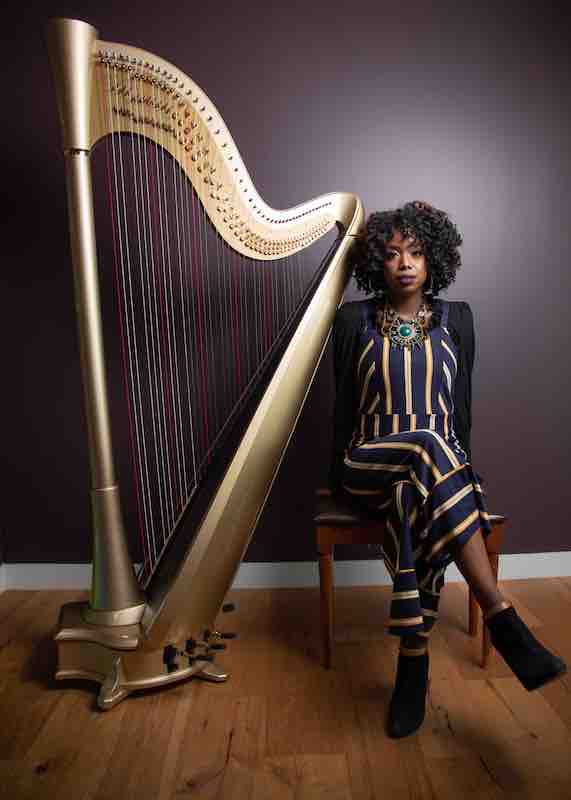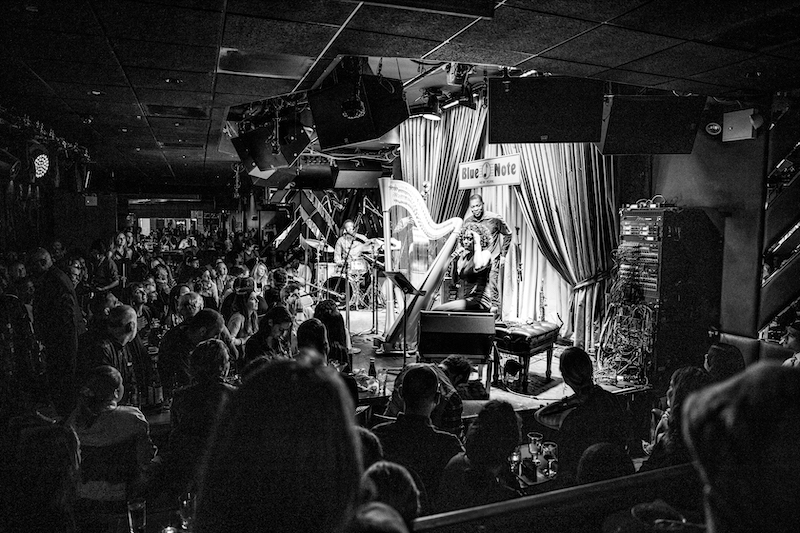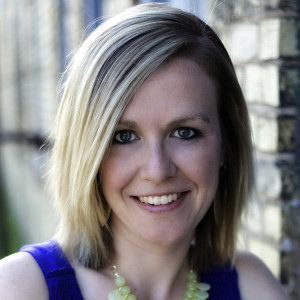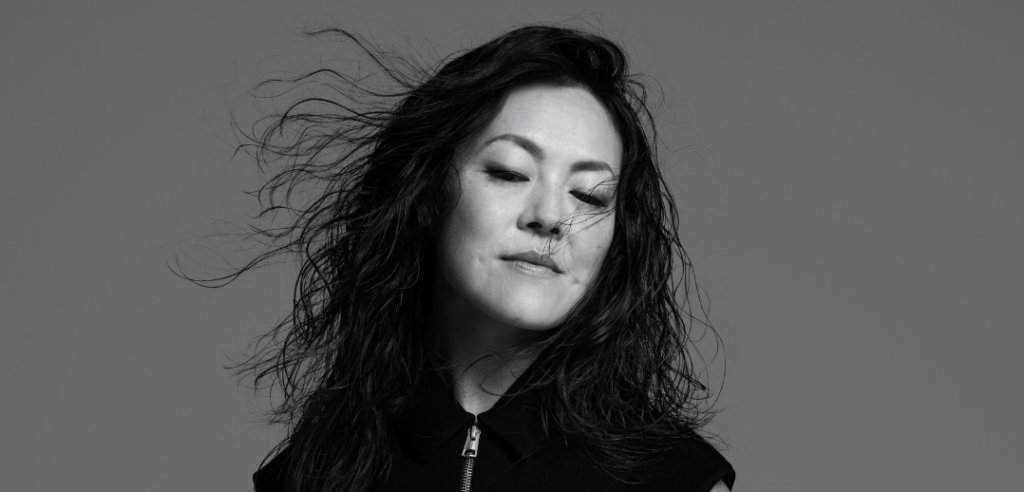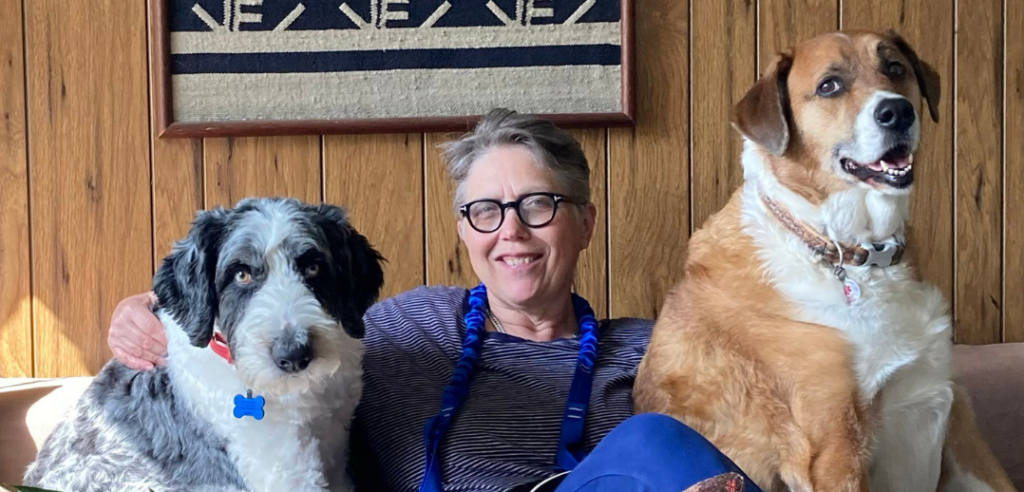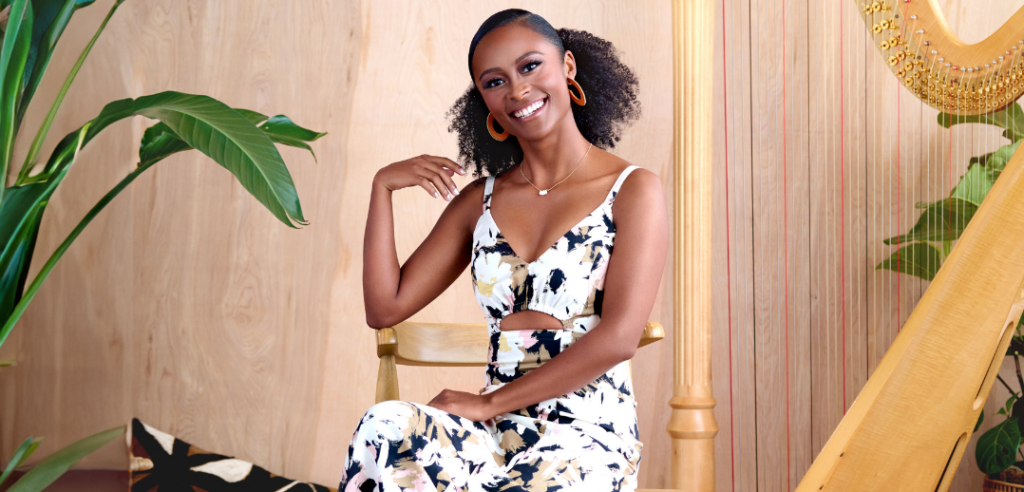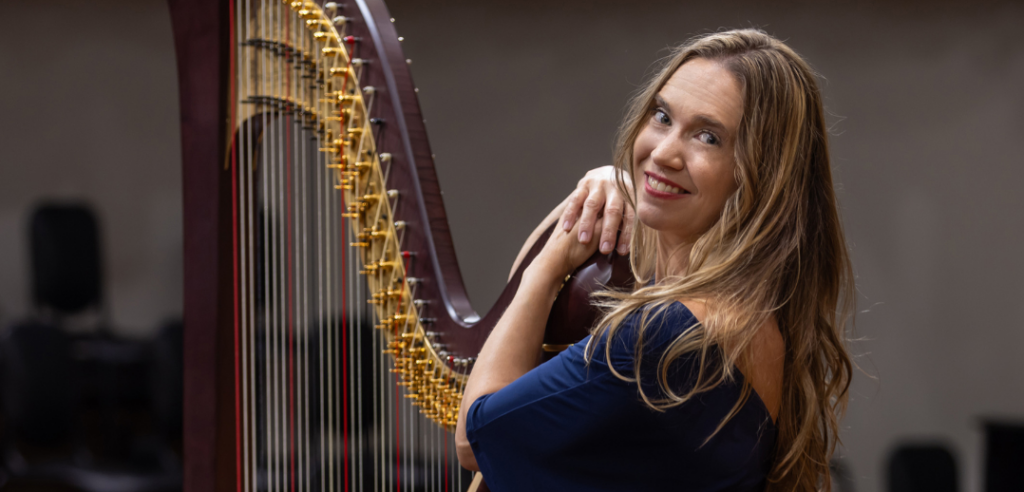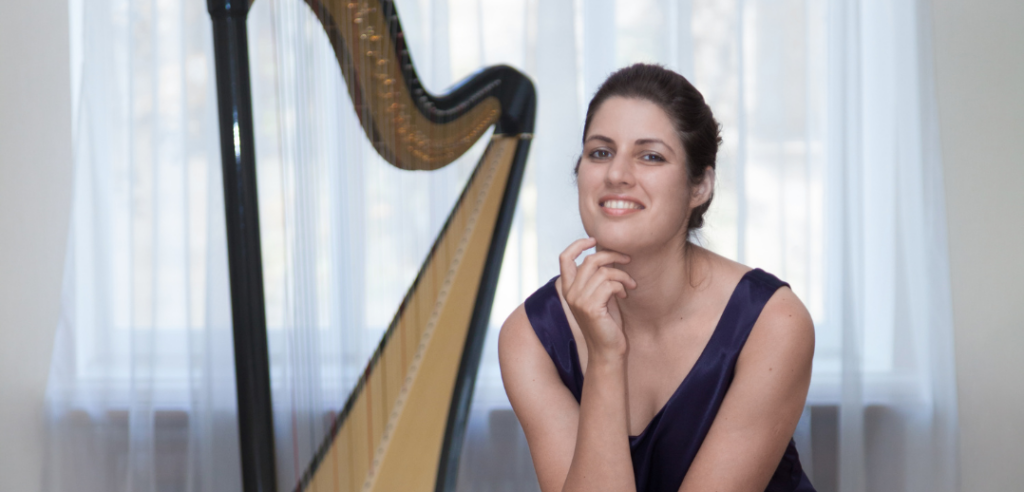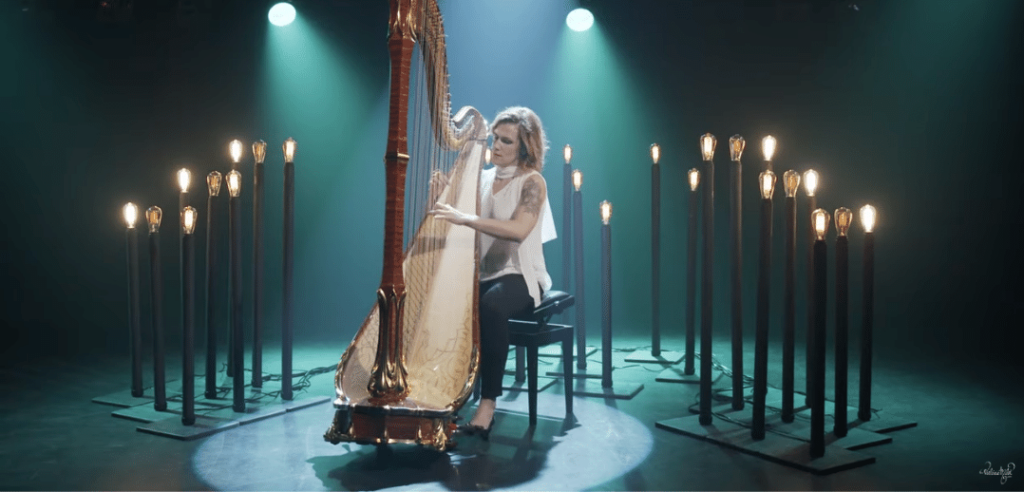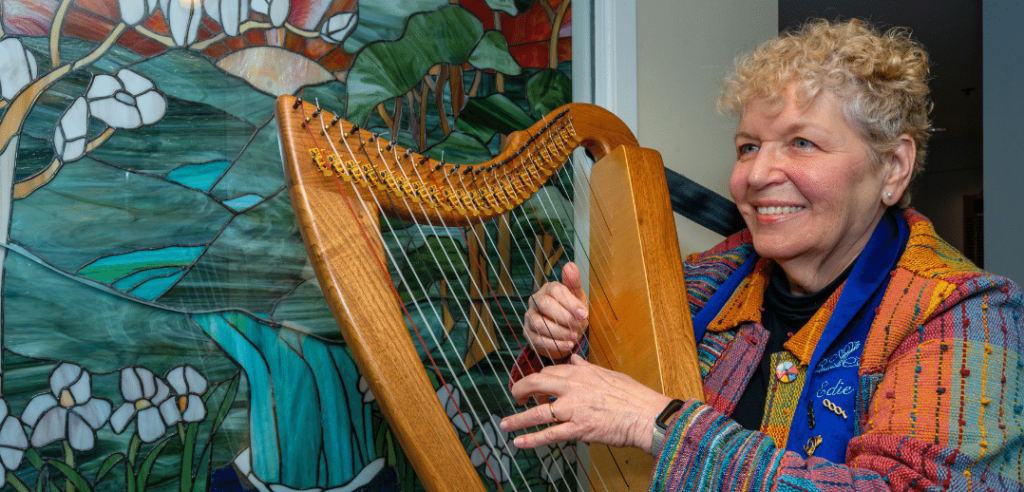What do you do when you’re a musician and all of your gigs are canceled because of a global pandemic? Brandee Younger’s answer: “You create.” Even when she didn’t feel like it, she and her partner bassist Dezron Douglas would pull out their instruments every Friday morning throughout lockdown and play “brunch” for a loyal and growing audience online. Those brunches turned into an album, released just last month, that is receiving widespread praise. Force Majeure is an unapologetic musical snapshot of lockdown life in 2020. The album is on brand for Younger. She’s always been Brandee, and proud of it. She has written her own story, and includes the hustle and the pop music and missed notes alongside the record deals and legend stories and…Oprah. During a year many musicians would declare a total loss, Younger has signed a major record deal, received two major jazz awards, been appointed to new teaching posts at major universities, and released a new album. Not bad for 2020. We caught up with Younger where else but on Zoom from her parents’ house, where she was getting ready to make her famous mac and cheese for Thanksgiving dinner.
Harp Column: You’ve had quite a year in 2020.
Brandee Younger: We’ve all had quite a year [Laughs]. There were things that were already in the works long before this year.
HC: Let’s start with your record deal that was recently announced with Impulse! Records. It’s the first time you’ve signed with a major label.
BY: I’ve been hardcore independent and self-managed my entire career. So for me to make this leap at this age and stage [in my career] was a big decision. During my undergrad, I studied harp performance and music business, where a lot of our time in business courses was spent combing through record contracts. So part of it scared me. I had also interned at record labels and had seen the process. I didn’t want that for myself, so I was purposely independent despite having been offered some other deals in the past. I think what it all came down to this time was finding the right fit, and also thinking beyond myself in terms of the instrument and its place in our culture beyond classical music. I had one of what I call my “Oprah aha moments.” Obviously, I didn’t know I was going have this career. It’s not like I was 8 years old with dreams of this. I realized it was just something that was happening to me, so it’s more important than just me and what I want. I think the harp doesn’t always get the respect it deserves outside of the classical context, so I felt that this record deal was an opportunity to push the harp to the forefront in ways that it’s not already.
HC: Tell us about what you hope to do in this recording project.
BY: Well, it’s not just a project, it is a relationship, several albums. I always think of this as a marriage. It feels like I’m married to my producer. That’s also another reason I had to think carefully about this. Impulse! is the label that John Coltrane made famous. They call it the house that Coltrane built. So many legends recorded on this label, including John and Alice Coltrane. So it has this rich legacy and history, which was important to me. Since I look to both Alice Coltrane and Dorothy Ashby as my influences, this felt like the right fit. My vision for this first record is to strip it down. All of my records thus far have been very horn heavy. This album will be less horn heavy and more harp-centered. This first album will be released probably this spring or summer.
HC: You were also recently appointed to teach at NYU and at The New School, where you’re leading an Alice Coltrane ensemble in addition to teaching.
BY: I’m thrilled about leading the Alice Coltrane ensemble, and I’m an alum of NYU where I studied with Emily Mitchell for my master’s, so it’s really special to be back there. My teaching duties will be shared with Bridget Kibbey, and we’ll be running a summer intensive program there this June, which will be formally announced in January. I’m looking forward to that. At The New School, it’s a special position, because I’ll be able to teach across the Mannes School of Music and the School of Jazz and Contemporary Studies. With my own career spanning across genres, it feels like the position has been customized for me. I’ve always been that conservatory student who is like, “Hey, can I take that jazz ensemble? Can I study with that teacher?” A lot of the conservatories are not set up to allow for that kind of customization. I remember as an undergrad, I made an independent study, which was actually lessons with the jazz bass professor at [the Hartt School at the University of Hartford]. In the classical conservatories, we’re learning theory, solos, orchestra rep, and I noticed that the jazz majors are learning how to compose; they’re learning how to apply their theory directly to their music; they’re learning how to improvise. I thought, “Why aren’t we learning that? They’re learning to play by ear and read, why aren’t we? Aren’t these skills we’re going to need when we get out of school?” So the fact that The New School is allowing this “co-mingling” is incredible. If a clarinet student wants to take a lesson with me, they can, whether they want to just learn how the harp works or learn how to improve their writing for the harp or just open their ears in a different way. I’m really excited about that. And with both of the schools, I think it’s a real bonus that you have the opportunity to learn from multiple teachers. These are not schools where there’s one harp instructor, so you can you can learn different things from different teachers.
HC: Knowing what you know now, would you have done your college schooling differently?
BY: No, I wouldn’t have done school differently. If there was one thing that I would do differently, it would have been to start learning to play by ear before puberty. So I can’t blame college for that. Learning to play by ear is like learning a language. It’s much easier to pick up when you’re younger. Early jazz came from spirituals that were sung on slave ships coming over here, no one was writing this down on sheet music. I probably did a huge disservice to myself and slowed my learning process down tremendously by learning to read music before I developed my ear. I made it a point to not learn other styles of music the same way I learned classical music. So, I often struggle with my ear. I’m a lifelong student of this music, and I know it. I don’t try to act like I know what I don’t know. This is a lifelong uphill journey. Reading off the paper is something that I chose to do even though it hurts me all the time.
HC: Do you feel like there could have been an easier path for you in music?
BY: Absolutely.
HC: Why did you pick it?
BY: I think because I didn’t know what I wanted to do when I was younger. I did what I was told—study these excerpts, study these solos, learn these parts, show up in all black, shut up, and play your part. I did as I was told. I was a good kid, middle child here. [Laughs}
HC: So you were on the well-trodden path in classical music. We all know how that path goes. Where did jazz enter the picture?
BY: Well, do you notice I don’t ever say I’m a jazz harpist; I always say I’m a harpist. There are a few reasons for this. One, I didn’t formally study jazz. Also, I do straddle the fence between classical and other genres. I haven’t thrown away what I’ve learned. I just did a concerto last year with an orchestra. I still do what I was taught to do, but I break the rules, and I turn in different directions with it.
A few things stick out to me. When I was young, I always wanted to play what I heard on the radio. I grew up in New York, so I was listening to Hot 97—hip hop and R&B, and then the oldies that my parents listened to. So I would come to lessons with my first teacher Karen Strauss with cassette tapes, asking, “Can I play this?” And as long as I learned what was in my Fun from the First or whatever standard book I was in, she would, bless her heart, transcribe whatever song I wanted to learn. She allowed me to do both things. My parents always say, “You know, if Karen had not done that for you, you wouldn’t be able to do what you do today.” And you know, parents are always right.
So this desire to do something else was always there, but I always knew to do what I’m told. I knew I had to go to school if I was going to get better at this instrument. I knew I had to study it. And then right at the end of college, several things cemented my path forward. I got to work with the great saxophonist Kenny Garrett, and I also did my first Top 40 session for Bad Boy (back when Bad Boy was a thing). Those things were the launch pad for the directions I was going.
HC: Right, it’s not just classical and jazz that you do, either.
BY: I do lots of recording—it’s about half of my career. A big portion of what I do is pop, and I was never ashamed of it. Most classical and jazz musicians think they’re too sophisticated to play pop music, but I am not ashamed.
When I was in high school, what I wanted to do was go to college for marching band. I played the flute, but my teacher switched me to trombone. I had wonderful high school jazz band and marching band teachers. We had an instrumental instructor who gave us lessons and also directed the jazz band.
HC: This was a public high school?
BY: Yes. I entered public school in fifth grade kicking and screaming, but it was the best thing I ever did. Public school offers so much for free. I was able to synchronize swim and run track.
HC: Wait, you did synchronized swimming?
BY: I was able to do anything I wanted in public school, and the teaching was great too. My marching band instructor taught us basically the same style of marching band music as historically black college marching bands do.
HC: No kidding, at a public high school?
BY: Oh, yeah. That’s what we did. We were playing Earth, Wind and Fire…it was so much fun and so rewarding. Of course, we were complaining in the moment when we’re marching on a field at 7 a.m., and we’re tired, and it’s cold outside, and we’re swinging trombones, and there are worms coming out of the ground, but you have to get ready for the Macy’s Thanksgiving Day Parade. But those were experiences that I’ll never forget. So that is what I wanted to do—I wanted to go down South and do marching band. And do you know what my parents said to me? “What are you gonna do? Get a bachelor’s degree in marching band?” And they shut this girl down again. But that’s okay.
HC: What did your parents do for a living?
BY: My mom is a retired school teacher, and my father is a retired pharmaceutical salesman.
HC: So neither is a musician.
BY: No, neither is a musician. My grandmother was a part of the Great Migration. My parents knew they had to get a job if they were going to do anything. Now in their retired life, they help me at shows. It’s the reason I’ve been able to be independent for so long. They physically make themselves available to help me out.
HC: That’s really neat that your parents have been so supportive of your music.
BY: Yeah, when I was in high school, my parents bought me an Alice Coltrane CD, and I thought, “This is cool. I don’t know what she’s doing, but I want to do that.” So even in high school I was curious beyond what I was learning. I wasn’t pulled toward a specific genre, but I knew I wanted to do more than the standard classical rep. This Handel concerto was fun, but I got nervous playing in front of the orchestra. I don’t like being singled out. I’m a middle child. And I’m awkward. And I’m shy. I still get nervous. Nerves are real, and people don’t like to really talk about it. But it’s a real thing. Why do you think I have a band? [Laughs]
HC: So is the collaborative nature of jazz something that appealed to you?
BY: When I was in college we had practice cells, you know. [My future partner] Dezron’s [Douglas] practice cell was directly across from me. So I remember learning two pieces—Grandjany’s Children’s Hour Suite and Ravel’s Introduction and Allegro—and one day Dezron knocked on the door and he was like, “Why are you playing it like that?” I said “What do you mean like that? He said, “You’re playing it too fast. That’s a beautiful melody.” Then he just started to sing it the way he wanted to hear it. He’s like, “If you slow it down, you can actually hear the melody and the beautiful harmonies. There’s so much music in there, and it’s going so fast.” I’m like, “But Grandjany plays it so fast on his recording.” Dezron says, “But you can’t hear it.” I held on to that after college. I started to develop a different perspective on phrasing and how I want to hear things. For my senior recital, I did all the required rep, and I also put a jazz standard and a Luther Vandross tune on the program. And my teacher, Rebecca Flannery, was supportive of that.
HC: It sounds like you had good teachers throughout your education.
BY: In college, I would audit classes in our incredible jazz department. I would sit in the masterclasses and in the ensemble classes. The director of the program (the department’s actually named after him, the Jackson McLean School of African American Music) embraced me with open arms the day I got there. He really opened up a door for me to just sit and absorb.
HC: In December, you and Dezron released an album you created during the early lockdown in New York, Force Majeure, what a perfect album title. Tell our readers how this album came to be.
BY: In short, Dezron and I were scheduled to do a concert at Columbia in March. Like everything else in the world, it got canceled. We were joking that every time we got a call for a cancellation last spring everyone’s citing that freaking term in the contract. So when our Columbia concert was canceled we thought, why don’t we just do the concert anyway. We could just do it here in the living room. We could stream it on Facebook. We didn’t plan on doing it more than once. But we realized what people were going through during that first livestream and the feedback from people. They were saying stuff like, “You just gave me this music during my lunch hour, and it fixed my whole day because I’ve been so depressed.” People were struggling. They needed this. The concerts sort of became an obligation. We would continue to do it at 11 a.m. on Friday mornings. We called it brunch, and we’d have coffee, and we’d play stuff we had never practiced or rehearsed. It was just like, “Let’s try this. I love this tune. My mom likes this one. Let’s do this for someone’s birthday.” It was really raw, really natural. Sometimes in the background, you could hear the sirens of the ambulances going to Mount Sinai [Hospital], which we live near. As the year progressed, it turned into these civil rights protests coming down our street. There were these super dark moments where the music became healing for our listeners and for us. We didn’t even know what else to do. There were times that we did not feel like doing the Friday brunch, but people were asking, “Hey, are you coming on today?” And we’re like, “Oh, gosh, alright, I’ll get dressed.” It was a struggle.
HC: So how did these weekly livestream brunches turn into an album?
BY: I had recorded all of these Friday brunches on my iPad or my phone, whichever we streamed on. I recorded it directly. There’s an indie label in Chicago called International Records that we had both worked with before. They asked if we wanted to release these brunch recordings. My answer was an enthusiastic yes, because I want to leave this pandemic was something tangible. I had no idea that it would get the reach that it’s getting or else I would have maybe at least tuned my harp. [Laughs] It is raw. It is real. You can hear Dezron shouting a chord because I don’t know where to go, or us bickering, or the ambulances going by.
HC: So you recorded this album with one mic, on your iPad?
BY: Yes, that’s it. We did it to memorialize that moment between March and June, and we decided to release it in December.
HC: It’s like a time capsule of this incredible moment that would be hard to fathom if you didn’t live through it. Was it a hard decision to release this recording?
BY: No. They approached us about doing it early on, and we knew it was so special that we needed to capture this. Over time, Forbes covered it, the Wall Street Journal, NPR. So many publications jumped on board, and it had such a wide reach that people started to tune into even the old livestreams. I didn’t know how to record these; there was a learning curve, both visually and with the sound, but people weren’t there for that. They were there for the experience. We weren’t just playing; we were talking—talking about what’s happening and how we’re feeling and interacting in real time with people in the chat box. Dezron would just run his mouth, and I would respond to what I was seeing. Actually, you hear me in the first track yelling, “Hey, Natasha! Hi, Eleanor,” in the recording. I’m just talking to my friends I see watching the live feed. I didn’t think twice. But it’s real and it isn’t a lie.
HC: Where can folks get a hold of this recording?
BY: Bandcamp, iTunes, Apple Music, anywhere you buy your music, you can get it.
HC: We haven’t even talked about a few other things that you’ve had going on this year. You had a commission from the Jazz Coalition. You were named a rising star by DownBeat magazine. You were named player of the year of instruments rare in jazz (I love that category) by the Jazz Journalists of America. You’ve received these awards, you’ve had commissions, you’ve got these albums and new teaching appointments. You’ve had more going in a year of a pandemic, it seems, than most people do in a normal year.
BY: The Jazz Coalition commission, like our quarantine album, was something that was born in response to the pandemic. We’re so fortunate for the board of jazz presenters and jazz lovers who put this initiative together. It awards musicians with the resources we need to produce and create during the pandemic.
With DownBeat, I had been nominated a number of times before, so that wasn’t out of the blue, but the Jazz Journalists’ Award is one that I did not expect at all. I was really humbled to receive both of these awards.
HC: With everything that’s happened this year, have you had a chance to stop and realize, “Hey, I made it. Look where I am.”
BY: Maybe before the pandemic…[Laughs] As we all know, it’s hard being a full-time artist. You’re always working; you’re always hustling to get to the next thing, and the next thing, and the next thing. The measuring stick that you use to determine success is really up to what you consider success to be. With the pandemic, people ask me, “How are you doing?” I’m like, “Well, I’m not evicted. I’m not in a hospital. My parents are cool. So I’m cool. Right?” It does make you sit and think about what matters right now. No one’s getting dressed, so clothes don’t matter. Nail polish doesn’t matter. The only other thing that matters is those blue light blocking glasses. [Laughs] So the pandemic really puts things into perspective.
HC: Let’s talk about being a freelancer in New York. There’s no class you take to learn how to make it as a freelance harpist there.
BY: The freelancing scene in New York definitely seems to have changed, starting with my generation. All of the musicians of my teachers’ generation and older played on long-running Broadway shows and then had fabulous recording careers. They’re still surviving off the residual recording sessions. When I was studying with Susan Jolles, she told me that [her teacher] Grandjany placed her on a show right after she finished school. Then my generation comes looking for those same opportunities, but they’re just not there anymore. Gone are the days when your teacher put you in these spots. Thank God, I got the hustle in me, and I was never that finicky about the type of work that I took.
HC: That’s so important, right?
BY: Whether it was an orchestra job, or playing in a coffee shop, or playing some genre I had no business trying to play, I tried everything.
HC: What have been your biggest struggles, your moments where you thought to yourself, what am I doing?
BY: I think I can speak for almost any harpist in the New York City area—it’s physical. You’re always hustling, physically. It’s the physical act of getting the harp to and from your gig, especially when the gig is in Midtown. You can’t just pull up and unload your harp into a building and set it up and then go park. You have to unload, maybe beg the cop to just not look at you for 60 seconds while you wheel the harp inside and beg the doorman to watch your harp for a minute so you can go put the car in a parking lot. What I’ve done for the past two years is Uber, which makes life easier since you don’t have to worry about parking, but you still have to do the loading. Needless to say, you have to travel very light. I have a backpack and a harp. That is what I’ve had to downsize in terms of gigging.
HC: You’ve played a lot of cool gigs. Can you talk about some of your favorite musical experiences thus far in your career?
BY: Well, when I played Alice Coltrane’s memorial in 2007, the New York Times described it as my introduction to the music scene in New York, which is funny because I was born here. I’m from here. But whatever. That was a turning point for my career, though. It was at St. John the Divine Cathedral—a breathtaking place. It was a musical memorial. Everyone who had ever played with her was there performing. I was there, totally out of my league, the first time I had ever tried to play her music, playing it with these masters.
HC: Wait, at Alice Coltrane’s memorial was the first time you played her music? I didn’t know that. Wow, talk about getting thrown into the deep end.
BY: I was so nervous, I thought my dress was gonna explode. Then last year I played at the grand opening for the Shed, this new, weird looking venue in the city. The event was called the Soundtrack of America, and it was created and curated by Quincy Jones and Steve McQueen. You always hear big names attached to things, but they’re never hands-on. Well, I went to the after party of opening night, and guess who rolls up? Quincy Jones. Now, I see famous people all the time, and I go the other way. I’m not about that. I don’t need a photo. I don’t like that. But I had to shoot my shot. It was unreal that someone like that was making himself that accessible. There were five or six weeks of shows, and I wasn’t playing until the next week. So the night I performed, there was a meet and greet with Q just for the performers. We sat there and talked and talked. He talked about studying with Nadia Boulanger, and about how he refers to the Introduction and Allegro as “the bible.” He gave me some of his own tips and tricks. One of the things I’m always preaching to college classes is mentorship and how important it is. But it’s dying because kids want to work straight out of school, and older folks don’t always make themselves accessible. Mentorship is losing on both ends. So for Q to make himself available to all of us like that was priceless.
HC: That’s wild.
BY: Then last November I played at Toni Morrison’s memorial. I had no idea that I was going to be a part of the program. This was a program with all of these famous writers, and Oprah, and me. My name is on the same program as Oprah! And I didn’t know all of this until I got there…talk about nerves.
HC: It might have been better that way, though.
BY: It was very special. I played The Lord’s Prayer—it’s kind of mash up of Salzedo’s arrangement and some changes I made to it years ago. It wasn’t perfect, but that’s okay.
HC: You mentioned earlier that you didn’t know you were going to be doing this when you were a little girl. It’s always interesting to look back and see that path your life has taken. For young people who might be reading this interview and be inspired to do what you do, what advice do you have for them?
BY: Make sure you form a relationship with a mentor. Sneak into a jazz club or get those standing tickets at the Met—do what you have to do to get close to your heroes. I can’t say it enough. We learn things in school, but we learn the good stuff by knowing these people. I’m not saying stalk these people, but do what you have to do to get next to your hero. I think mentorship is huge. Also, don’t be afraid to be yourself. If you feel like you don’t fit into a box, that’s probably a good thing. I wish that I had figured that out
sooner. •
Bonus time with Brandee
Uber or Lyft? Uber.
Mets or Yankees? Yankees.
Giants or Jets: Jets.
Nets or Knicks: Knicks.
Best slice of pizza in New York? Ben’s.
If you weren’t a harpist, what would you do? I’d be a nutritionist.
Your most used emoji? That shrugging “I don’t know” emoji.
What’s the last album you bought?
Cassie Watson’s album This Appears to Disappear. I was her first teacher, and I bought her album that came out in August. I also bought Maeve Gilchrist’s new album.
What’s your secret talent? My macaroni and cheese.
Heels or flats? Flats.
Favorite app? Patreon.
What’s the best borough? I’m gonna have to say Manhattan. I mean, I’m in Harlem, which is not a borough, but I’m happy in Harlem.
Where’s your favorite place to play? Electric Lady Studios.
Watch
Watch Brandee Younger’s performance (and Oprah Winfrey’s speech) at Toni Morrison’s 2019 memorial service on YouTube.







